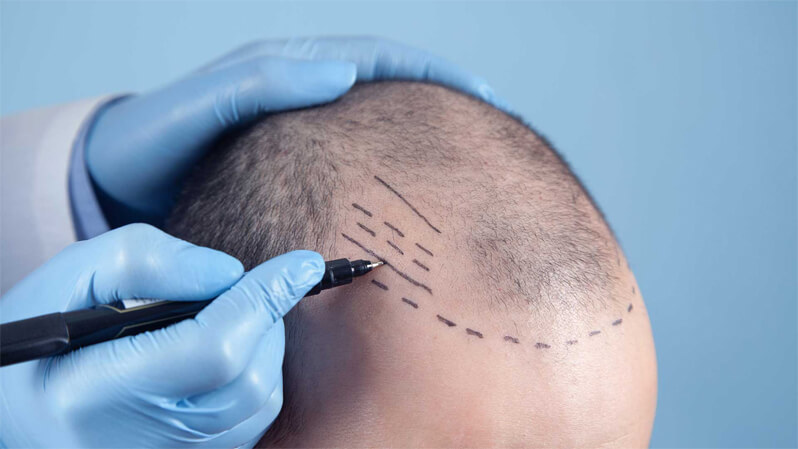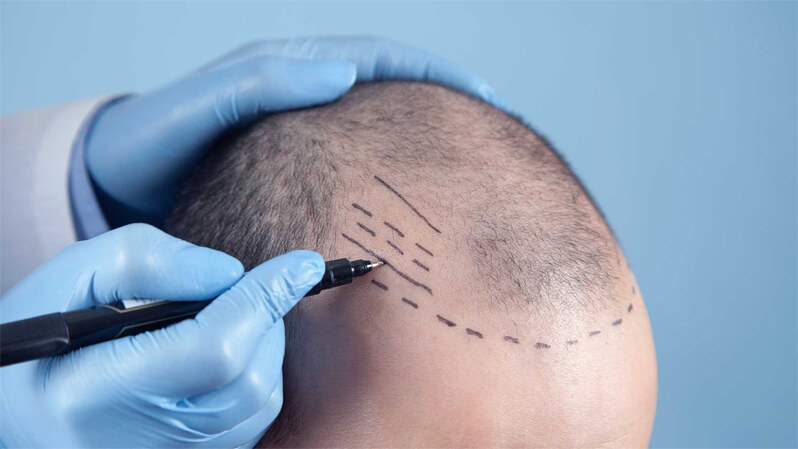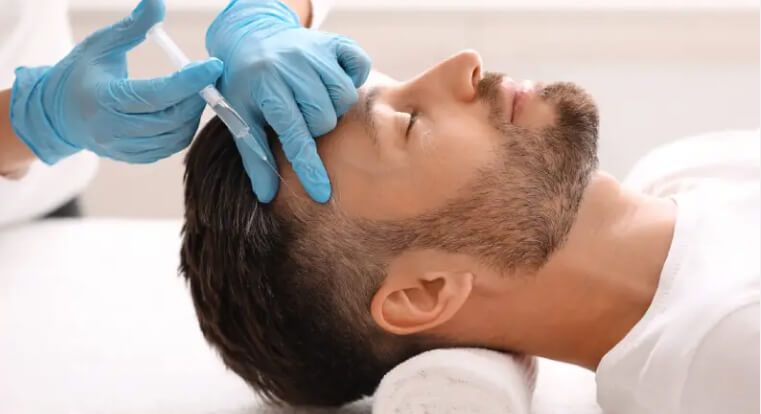
FUE, sapphire FUE, and DHI procedures are the most significant hair transplantation methods today. Depending on the demands of the individuals, each of these strategies provides benefits and good qualities.
WHAT IS A HAIR TRANSPLANT
Grafts with healthy hair follicles are moved from the donor region to the area where there is hair loss during the hair transplantation procedure. In the 1930s, a Japanese physician named Sasagawa had the original idea for the procedure of transplanting hair follicles. The accomplishment of a US doctor in 1952 made it real. Up until 1980, artificial planting techniques were used, but in the early 1990s, ways that produced natural outcomes were found. The development of novel technical advancements played a significant role in the invention of these techniques.
There are several causes of hair loss, including genetic, seasonal, dietary, and environmental ones. Many individuals all around the world are uncomfortable because of this issue, which affects both women and men. In addition, if hair loss is left untreated, it may lead to baldness. The goal of hair transplantation, a treatment option for this issue, which affects men as young as those in their 20s, is to restore healthy hair. So the patient's quality of life can be improved.
Permanent hair loss can be treated quite well thanks to hair transplantation. Many individuals can get the hair they want with this technique, especially in situations when pharmacological therapy is not an option. This treatment is carried out in a sterile setting by specialists who are professionals in medicine.

WHAT ARE HAIR TRANSPLANT METHODS?
Since hair transplantation has been used for so long, several techniques have been developed since the time this technique emerged. FUE, sapphire FUE, and DHI procedures are the most significant and widely utilized of these treatments today. Depending on the demands of the individuals, each of these strategies provides benefits and good qualities.
FUE Method: Using a micro motor, the needed number of hair follicles are transplanted to the forehead and surrounding area thanks to the FUE method, which stands for Follicular Unit Extraction. We are now able to carry out more successful hair transplants thanks to the replacement of the antecedent follicular unit transplantation (FUT) technology with FUE. A whole piece of skin with follicles was transplanted to the necessary location using the FUT technique. More natural-looking hair is now possible thanks to the FUE technique, which substitutes FUT. The hair that was implanted using this technique, which yields more long-lasting results, keeps growing. This method's lack of sutures has significant benefits in terms of avoiding scars and sores.
The Sapphire FUE: This is currently one of the most widely used hair transplantation procedures. Thanks to the Sapphire FUE method, hair transplantation is done on both shaved and unshaven regions. Channels are opened with a sapphire tip up to the amount of graft needed for transplanting. The scalp is subjected to the least amount of tension possible because of the sapphire tip. This indicates that the scalp will heal fast following the procedure. One of the most crucial aspects of this method is the sizes of sapphire tips. Grafts that are collected might be single, double, or triple. The safe removal of all grafts requires sapphires with varying tip sizes.
DHI Method: A different hair transplant procedure that has lately gained popularity is the DHI technique. Since this treatment does not need shaving the patient's hair before the surgery, women particularly favor it. The goal of this method is to protect the existing hair while filling up bald spots. So your hair will look natural and thick. Before beginning the procedure, the donor and planting regions are inspected in a computer environment utilizing a high definition camera. The hair type and shedding level are identified thanks to this stage. DHI is especially ideal for people who have an active social life and those who have mild hair loss.
PROCEDURE
Prior to hair transplantation, preparation is necessary. In order to define the borders of the donor area and the area of application during transplantation, drawings are done at this stage. After that, the necessary parts get shaved to get the skin ready for transplant. Sometimes it's possible to avoid shaving as is the case with DHI. After that, the operation's relevant phases are completed. Anesthesia administration, graft collection, and transplantation are these three steps.
- Anesthesia: The region to receive the transplant of hair is sedated before to the procedure. This guarantees that the patient will not experience any discomfort during the procedure. Since local anaesthetic treatments don't include the use of needles, the anesthesia is applied beneath the skin without any discomfort.
- Graft collection: In the beginning, tiny motors are utilized to individually collect each hair without changing the appearance of the donor region from where the hair follicle will be taken. The gathered grafts must be maintained in the transplant solution since they are still living cells. This ensures that the grafts' quality is maintained till the hair transplantation procedure is carried out.
- Graft placement: Transplanting hair precisely requires placing grafts. In this process, grafts are placed one by one by creating channels in the area where the roots are located. So the hair can be positioned in the area of baldness or thinning.
The hair transplant procedure is finished after the preparatory and these three steps. The next step is after care where you will heal and grow new hair. It is very crucial that this procedure be completed correctly.
AFTER CARE
After a hair transplant, it is crucial to properly care for the hair. Your hair is really delicate, particularly the first week. The day following the hair transplantation, the bandage is removed. Because the scalp is still sensitive after removing the bandage, you should avoid sunlight and hot water. You can wash your hair with a shampoo that the doctor has prescribed after the third day.
Additionally, if you want a quick recovery, you need to eat well. You should cut on tea and coffee. You should also avoid drinking and smoking. Additionally, refraining from physical exertion is advised throughout this time. This is because there is a chance that physically demanding activities might result in hits. The scalp starts to recover after the second week, and the crusts start to gradually peel off. To aid in the elimination of dead skin during bathing, it is advised to gently massage your head. Suddenly developing hair loss is possible following hair transplantation. The shed hair gradually comes back throughout this phase of shock shedding, and your scalp gains its ultimate form.
Edema and redness at the hairline significantly diminish three weeks following the procedure. you should avoid doing any strenuous activity during this time, and bear in mind that the healing process is still ongoing. Two months following the surgery, hair loss gradually stops. You will have new hair growth in the following months. The thickening of the hair is seen six months after the procedure. You may now start styling your hair. In conclusion, even if a hair transplant is safe, there are a few things to consider about afterwards. These are:
- You should avoid water on your hair in the first several days following the treatment.
- Avoiding stressful circumstances is advised.
- You should not participate in strenuous activities.
- Hot water should be avoided for the first 3 days after the procedure.
- You should avoid the sun until your scalp is fully healed since it is still sensitive.
- You shouldn't attempt to remove the scalp crusts on your own. Instead, gently touch and massage the crusts that have started to come off in the shower.
- You should not go out in rainy weather to protect you hair.
- You should take any medication or dietary supplement that your doctor has prescribed.
The outcomes of hair transplantation will be more successful if you follow all of these recommendations. Your scalp's well protection will ensure quick healing and that your new hair grows in a healthy manner. So the procedure will yield effective and long-lasting results.












